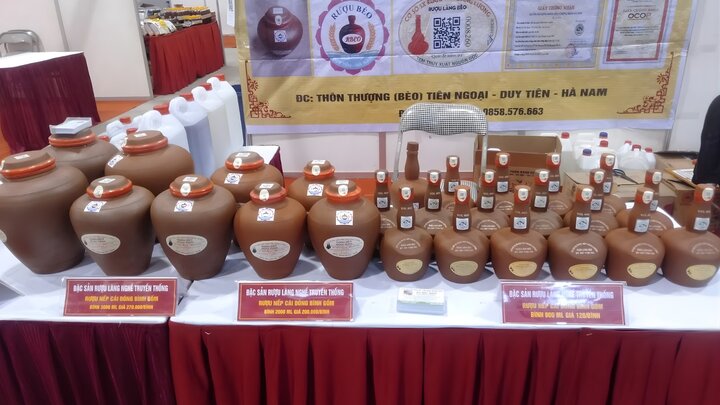1. Origin and Cultural Value of Bèo Village Wine Hà Nam
1.1. Origin and History of Formation of Bèo Village Wine Hà Nam
Located in Thuong village, Tien Son ward, Ninh Binh province, Bèo Village Wine Hà Nam is associated with a special story about a long-standing traditional craft. Although no one knows exactly when the wine-making craft originated, local documents show it appeared in the 19th century. According to the people of Thuong village, the craft was passed down by a Chinese doctor after being rescued by the villagers.
From the 1980s onwards, the craft of making Bèo Village Wine Hà Nam developed strongly as many families continued the ancestral secrets. Each household kept its own formula for yeast, fermentation time, and distillation techniques, creating a unique flavor. In 2008, Thuong village was recognized as a Traditional Craft Village for Bèo Wine production of Hà Nam province. This is a testament to the cultural value and pride preserved through generations.
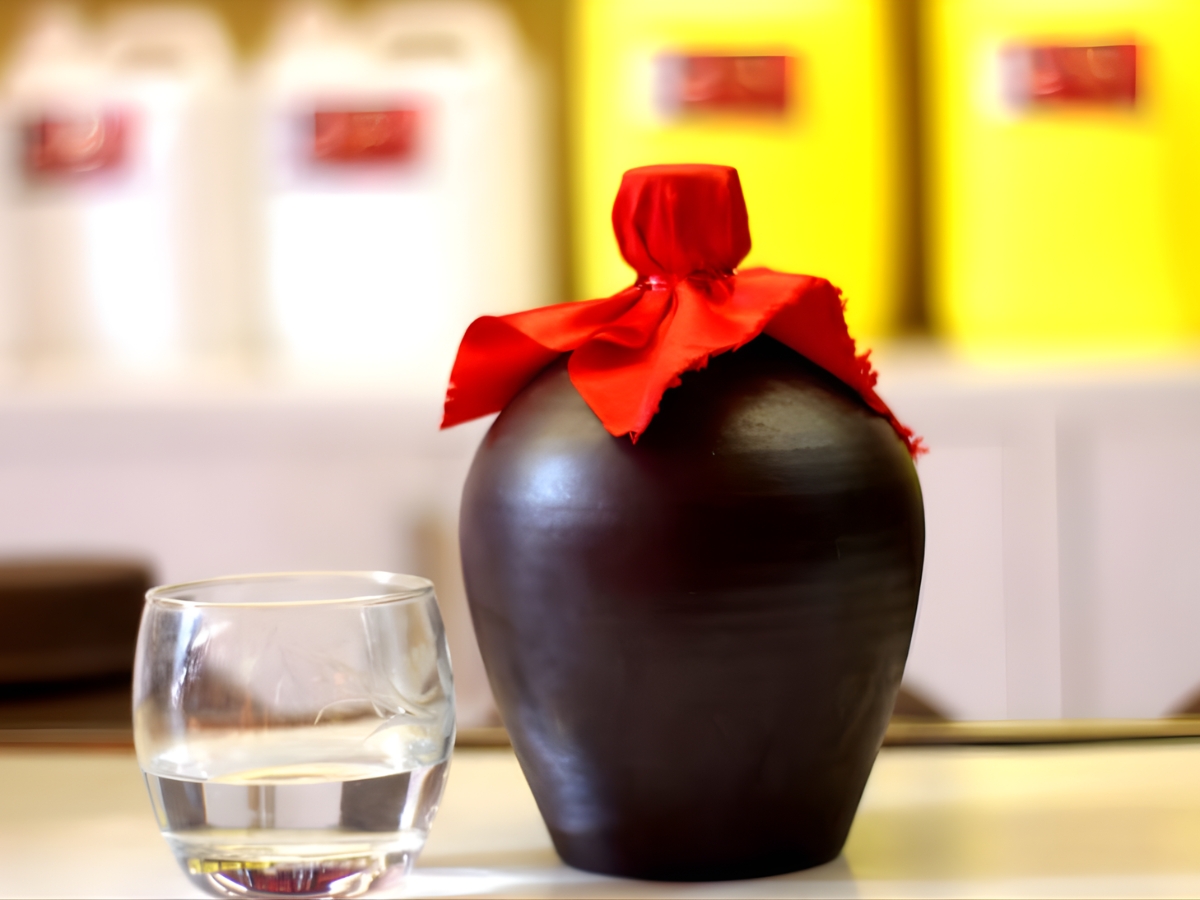
Lang Beo Wine - Ha Nam specialty. (Source: Collected)
1.2. The role of Lang Beo wine in local life and culture
Lang Beo Ha Nam wine is not just a simple drink, but has become a spiritual symbol of the community here. During New Year festivals, ancestor worship ceremonies, or joyous occasions like weddings, Lang Beo wine is always present as an indispensable part, conveying wishes and expressing the close bond between people.
The wine-making craft also contributes greatly to improving the material lives of many households in Thon Thuong village. Many families have stabilized their lives thanks to this traditional craft, while also creating more jobs for local workers. Furthermore, Lang Beo Ha Nam wine serves as a "cultural ambassador", spreading the name of Ha Nam to many places, attracting tourists to visit, learn about, and experience the unique craft village culture.
2. Traditional Lang Beo Ha Nam wine making process
2.1. Ingredients that create the characteristic flavor of Lang Beo wine
Lang Beo Ha Nam wine possesses a unique flavor thanks to the perfect blend of three elements: glutinous rice, traditional yeast, and ancient well water. Glutinous rice is carefully selected, usually round-grained and sticky, dried thoroughly in the sun to retain its full flavor and purity. Each grain of rice must be firm, free from pests, de-hulled, and washed clean before cooking.
The yeast is the "soul" of Lang Beo Ha Nam wine, made from 36 traditional Chinese medicinal herbs according to a secret recipe. Each family in the village keeps its own secret yeast-making method, passed down only to their descendants, creating a unique flavor found nowhere else. The crystal-clear, cool, and mineral-rich well water in the village is the final element contributing to the mild sweetness, smooth warmth, and deep aftertaste of this renowned wine.
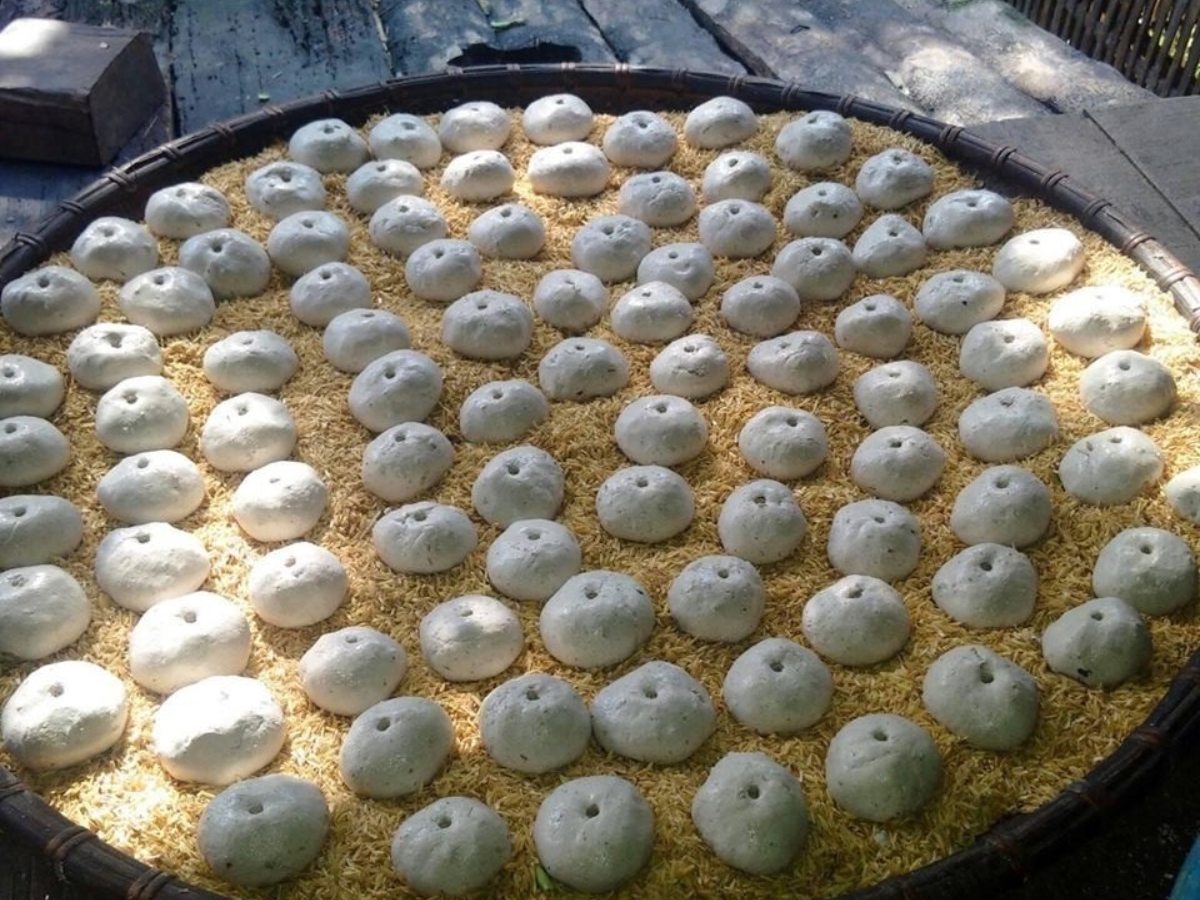
The starter culture is made from 36 traditional Chinese medicinal herbs using a secret traditional recipe. (Source: Collected)
2.2. Stages of brewing Ha Nam's Beo Village wine
The brewing process of Ha Nam's Beo Village wine is an art that requires meticulousness and long-standing experience from the craftsmen. From the stage of adding the starter culture to the wine being ready, it is an elaborate process that demands patience and refinement in every detail. The starter culture, after being added, must wait 2-3 days for its aroma to develop before it can be opened. Glutinous rice is cooked just right, not too dry or mushy, then fluffed up, cooled down, and only then is the starter culture added. The rice and starter mixture is put into clay jars, sealed and fermented for 48 hours until it becomes moist and slightly gelatinous, only then is water added and fermented for another two nights before distillation.
The distillation step uses copper pots combined with traditional cooling pipes, requiring the craftsman to skillfully manage a small and steady flame so that the alcohol drips out slowly, preserving its characteristic flavor. After distillation, Ha Nam's Beo Village wine is allowed to settle and carefully filtered, then stored in clay jars and kept in a cool place.
The finished product is crystal clear, emitting a gentle aroma and a pungent taste that spreads on the tip of the tongue. Locals liken Beo wine to "essence and soul", the quintessence distilled from heaven, earth, and human labor. Not just a traditional drink, Ha Nam's Beo Village wine is also a cultural symbol, reflecting the skill, dedication, and pride of the Ha Nam people through generations.
2.3. Preservation techniques to retain authentic flavor
Clay jars are chosen for storing Ha Nam's Beo Village wine due to the natural "breathing" property of the earthenware material, allowing the wine to continue "maturing" over time while retaining its characteristic aroma. These wine jars are usually placed in well-ventilated cellars, away from direct sunlight, and maintaining stable humidity to ensure the best quality. The longer it is aged, the milder, clearer, and more profound Ha Nam's Beo Village wine becomes, leaving an unforgettable smooth and rich aftertaste on the palate.
3. Guide to identifying and enjoying authentic Ha Nam's Beo Village wine
High-quality Ha Nam's Beo Village wine usually has a transparent color, with a slight greenish hue when exposed to light. When poured into a cup, the wine has a natural viscosity, without cloudiness or sediment. An easily recognizable characteristic is the "wine beads" appearing when the bottle or cup is gently shaken; tiny bubbles rise and linger on the surface, indicating the wine's purity and stable alcohol content.
The aroma of Ha Nam's Beo Village wine carries the characteristic scent of glutinous rice, with a hint of medicinal herbs from the traditional starter culture. When sipped, a mild spiciness spreads on the tongue, followed by a gentle, smooth sweetness, not harsh on the throat. Good wine leaves a warm feeling in the body, pleasant without causing a heavy head after consumption.
To choose and buy a bottle of authentic, delicious Ha Nam's Beo Village wine in 2025, tourists should go directly to the production households in Thuong village or reputable agents recommended by locals. When buying, carefully observe the clarity, gently shake to check for wine beads, and smell the natural aroma of the rice. Avoid choosing bottles that are cloudy, have strange odors, or do not clearly show wine beads.

Buy Lang Beo wine from reputable establishments to avoid purchasing substandard products. (Source: Collected)
Enjoying Lang Beo wine from Ha Nam also requires a refined approach. Visitors should use small cups and take sips to fully appreciate the aroma of glutinous rice and the sweet aftertaste. Drinking slowly, allowing the wine to spread in the mouth before swallowing, will provide the most complete experience. For those new to tasting or with a low alcohol tolerance, it is advisable to drink only a small amount to experience the rich flavor while remaining safe and comfortable.
4. Secrets to Preserving the Soul of Lang Beo Wine, from Pure Water Source to Heirloom Recipe
4.1. The Influence of Water Source and Environment on Wine Quality
Nature plays an important role in creating the characteristic flavor of Lang Beo wine from Ha Nam . The well water in Thuong village has long been considered a 'golden' element of the winemaking craft, as it contains natural trace minerals, making it highly suitable for the fermentation process. The clear, sweet, and cool water, unaffected by industrial chemicals, combined with a climate of stable humidity and temperature year-round, facilitates the fermentation and distillation processes, creating a mild, clear, and distinctively deep wine aroma.
However, nowadays, due to groundwater pollution in some areas, residents have switched to using equivalent clean water sources to ensure safety, while still retaining the traditional flavor of Lang Beo wine from Ha Nam .
4.2. Heirloom Secrets That Build the Fame of Lang Beo Wine from Ha Nam
The yeast is considered the 'golden key' in building the brand of Lang Beo wine from Ha Nam . The recipe for preparing the yeast, using 36 precious traditional Chinese medicinal herbs, with mixing ratios passed down only within the family, has never been revealed to outsiders. Besides creating the characteristic flavor, these herbs also enhance the nutritional value of the wine.
The experience in controlling the fermentation and maturing processes is also the village's own secret. Experienced craftsmen can tell when the yeast is 'ripe' simply by listening to the sound and smelling the aroma, accurately determining the time to move to the next stage. Thanks to these passed-down experiences, Lang Beo wine from Ha Nam has maintained stable quality for nearly two centuries, serving as a source of pride for the people of Ha Nam and making it difficult for any other place to completely replicate.
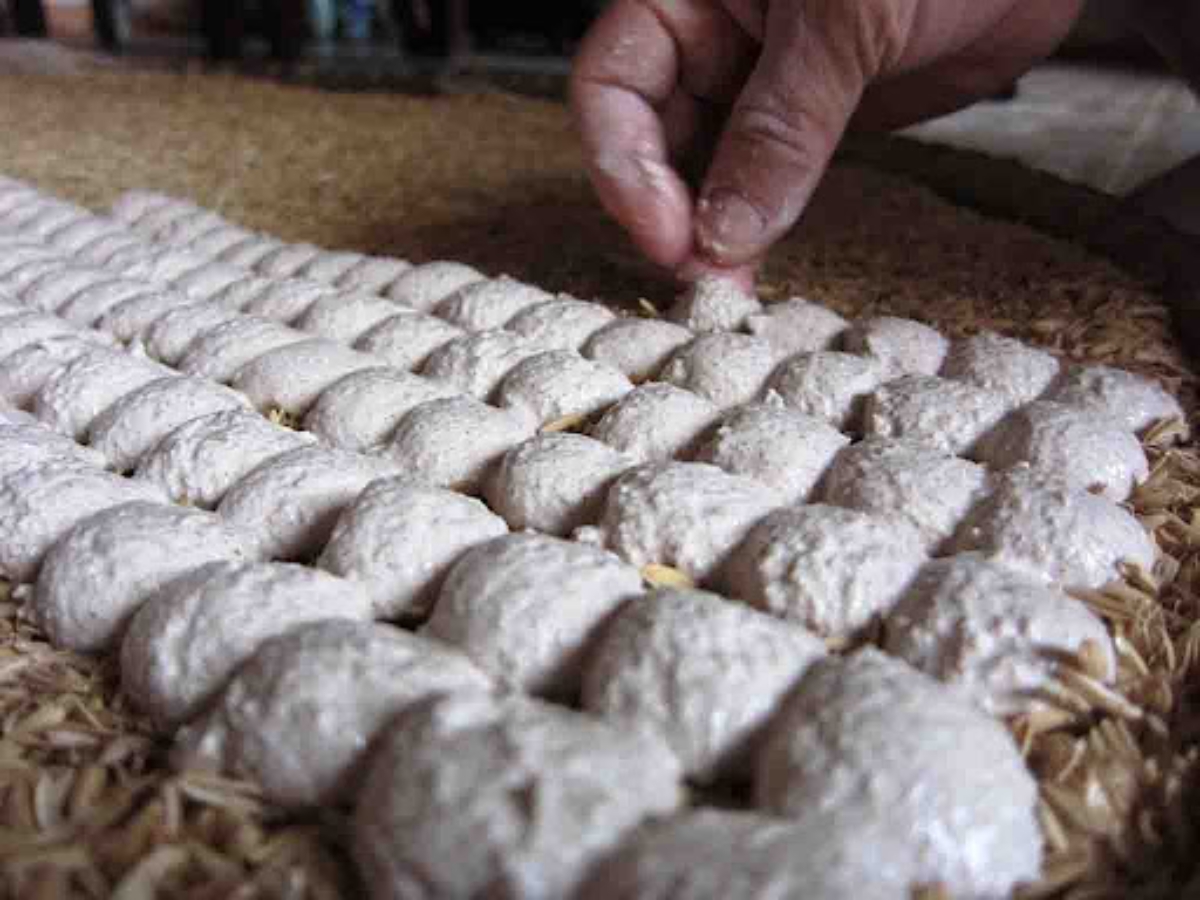
Each family has its own recipe for fermenting rice wine. (Source: Collected)
5. Suggested itinerary for experiencing the traditional rice wine village of Lang Beo Ha Nam
The journey to discover Lang Beo Ha Nam rice wine will be more complete if combined with a visit to Sun World Ha Nam. In the morning, visitors can visit the wine-making households in Thuong village, listen to stories about the traditional craft, and witness firsthand each step from cooking sticky rice, fermenting the yeast, to distilling the wine. In the afternoon, continue to Sun World Ha Nam to play in a vibrant atmosphere, experience exciting entertainment games, and admire the majestic mountain scenery.
Besides that, visitors can also enjoy famous specialties of the Duy Tien region such as Cam Khe royal bananas or Vu Dai village braised fish. A lunch at a local restaurant, sipping a glass of Lang Beo Ha Nam rice wine, will bring an authentic culinary experience. After exploring the cuisine, you can also visit Ba Danh Pagoda or Tran Temple. These are all sacred places, closely associated with the long-standing culture and beliefs of the people of Ha Nam.
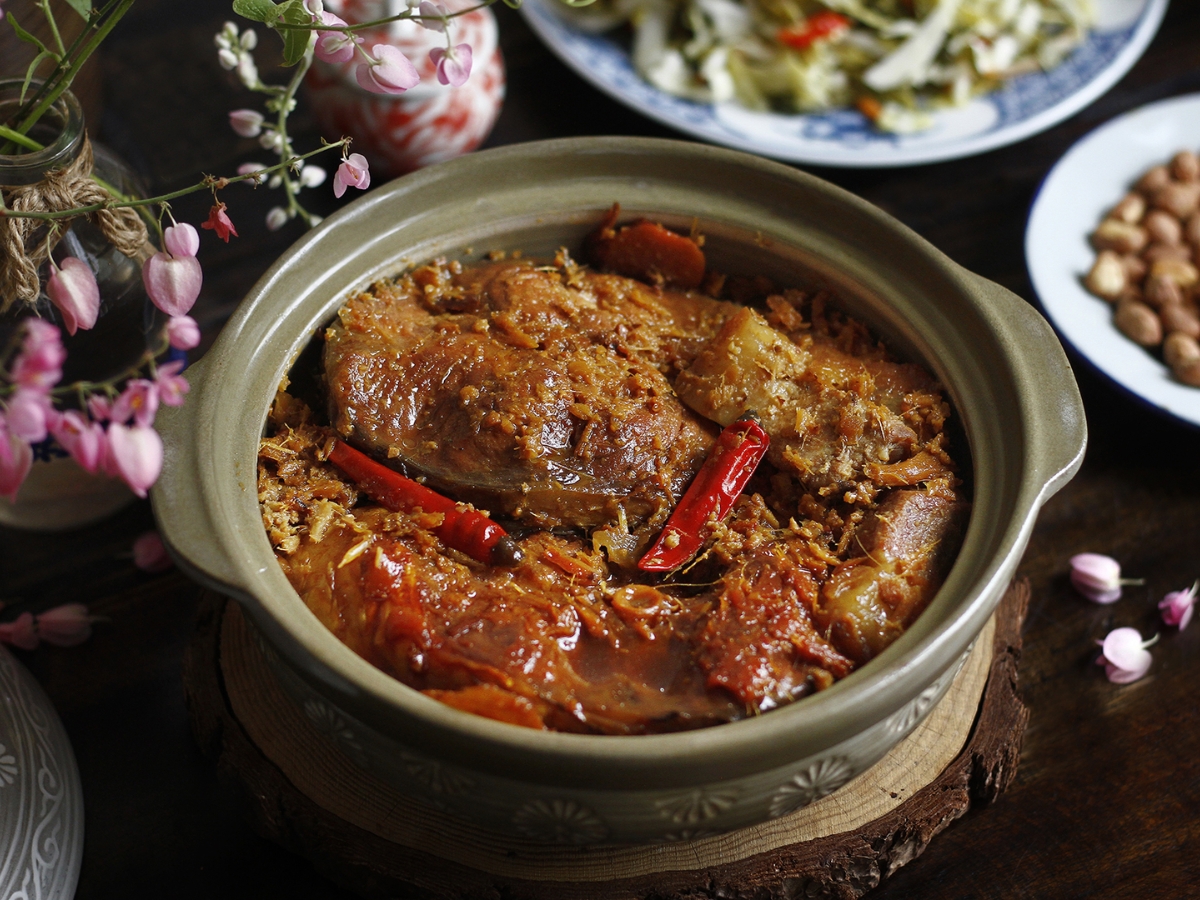
Enjoy the specialty of Vu Dai braised fish. (Source: Collected)
When visiting the craft village, visitors should contact the alcohol brewing households in advance to receive dedicated guidance and have the most complete practical experience. The ideal time to visit is from October to March next year – the busiest alcohol brewing season of the year, when the aroma of yeast spreads throughout the village. Visitors can directly observe the process of yeast fermentation and distillation, or try participating in a few simple steps.
To buy authentic Sao Lang Beo Ha Nam wine, it is recommended to find reputable production facilities recommended by local people. When bringing it home, the wine should be stored in a dry, cool place, avoiding direct sunlight. If buying as a gift, you can prepare elegant packaging and include a leaflet about its origin, so the recipient can better understand the traditional value and the pride of the land of Ha Nam.
Sao Lang Beo Ha Nam wine is not just a drink but also a cultural symbol, a testament to the perseverance of the people in preserving traditions. Each visit to the craft village is an opportunity to fully experience the traditional flavors, contributing to spreading the cultural values of the homeland to a wide audience of friends and tourists in 2025.

